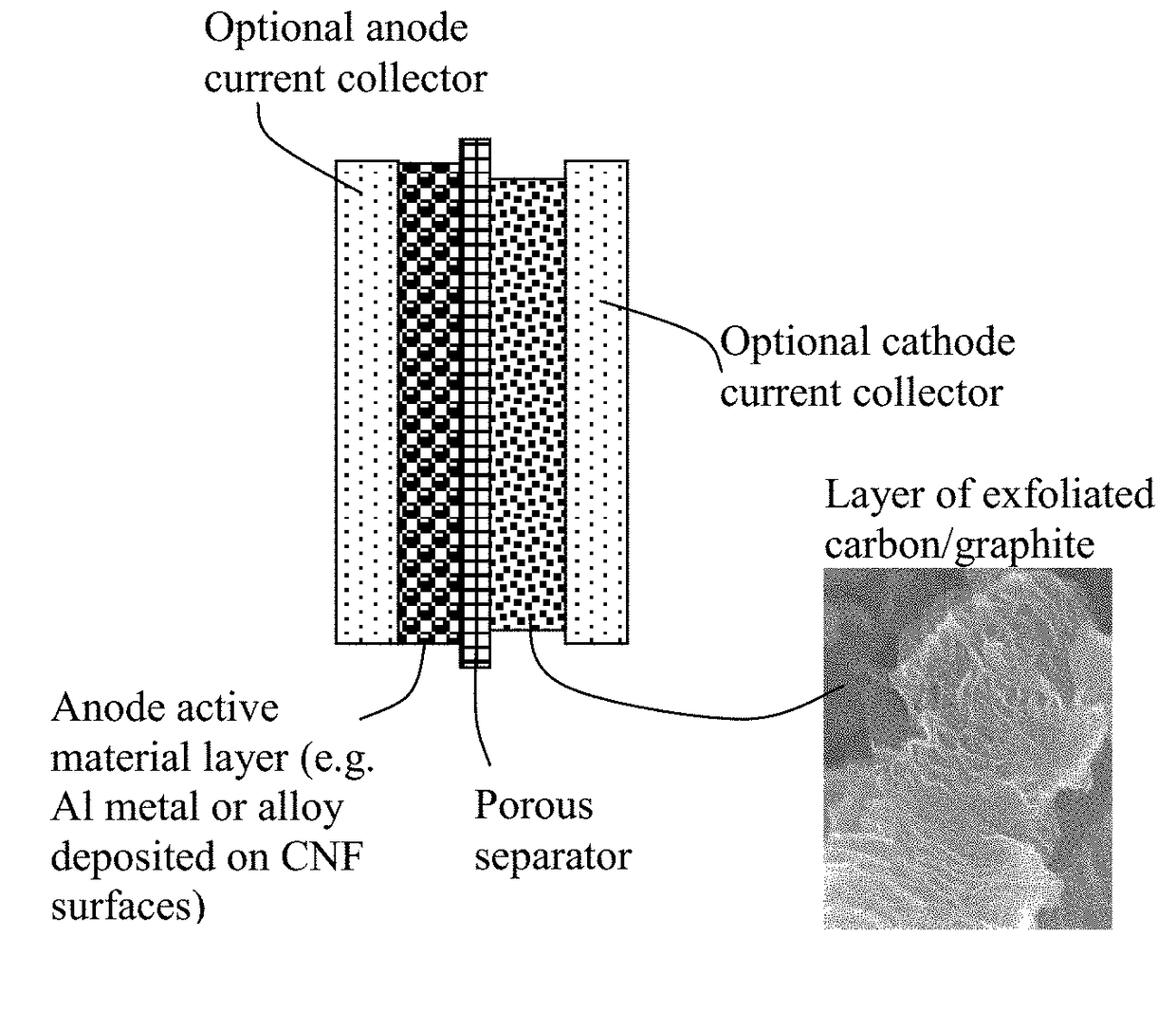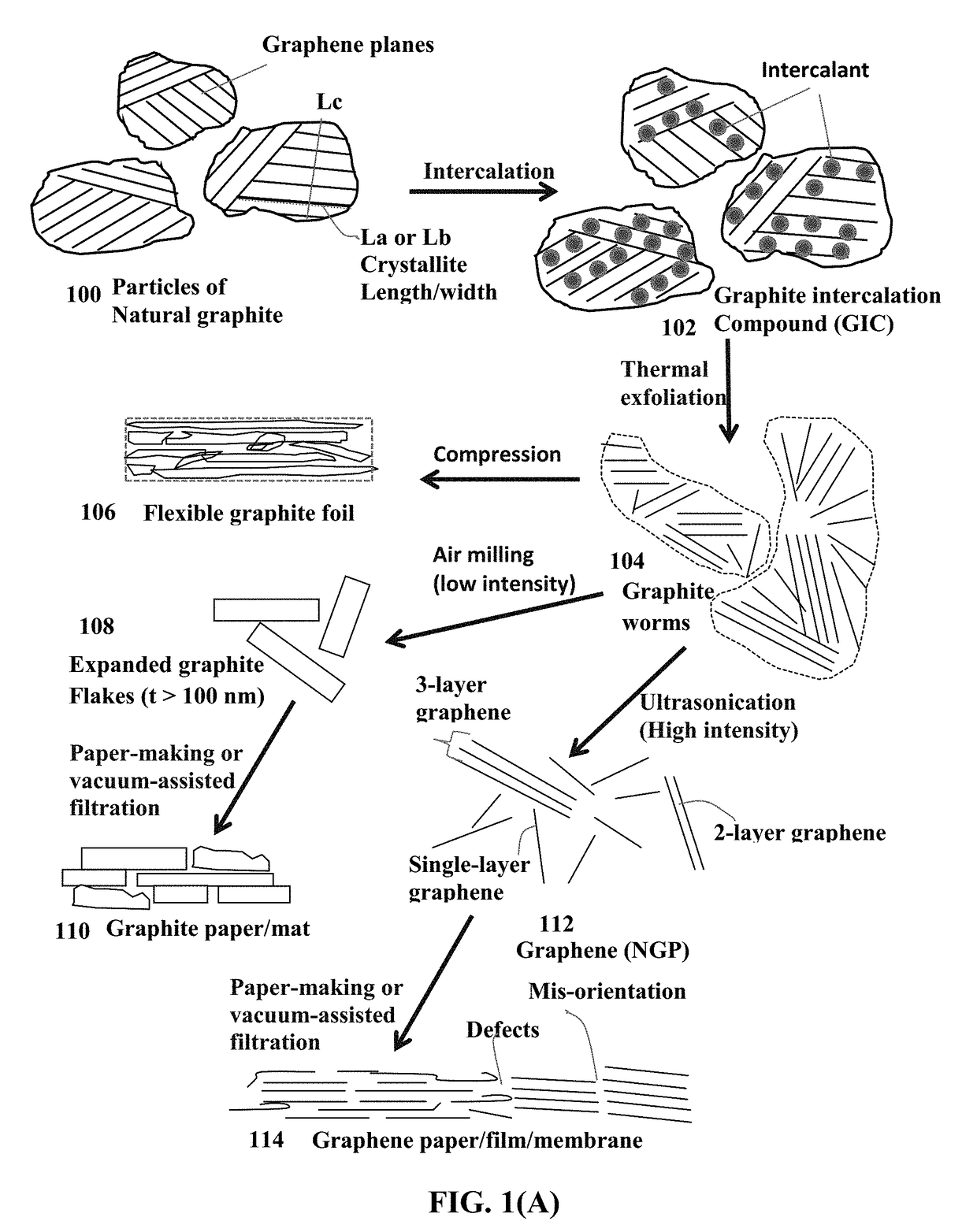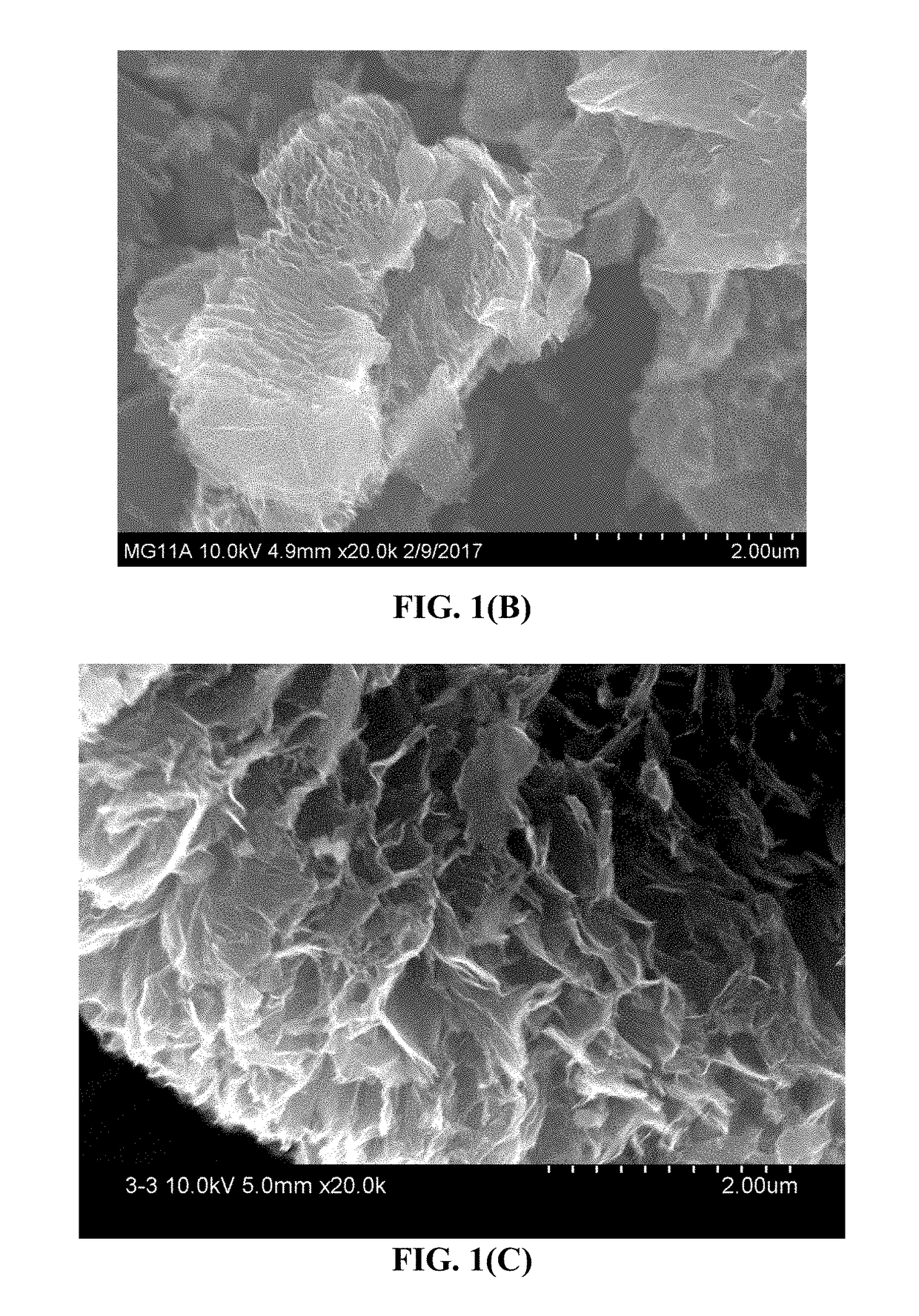Aluminum Secondary Battery Having an Exfoliated Graphite-Based High-Capacity Cathode and Manufacturing Method
- Summary
- Abstract
- Description
- Claims
- Application Information
AI Technical Summary
Benefits of technology
Problems solved by technology
Method used
Image
Examples
example 1
of Graphite and Thermal Expansion / Exfoliation of Oxidized Graphite
[0077]Natural flake graphite, nominally sized at 45 provided by Asbury Carbons (405 Old Main St., Asbury, N.J. 08802, USA) was milled to reduce the size to approximately 14 (Sample 1a). The chemicals used in the present study, including fuming nitric acid (>90%), sulfuric acid (95-98%), potassium chlorate (98%), and hydrochloric acid (37%), were purchased from Sigma-Aldrich and used as received. Graphite oxide (GO) samples were prepared according to the following procedure:
[0078]Sample 1A: A reaction flask containing a magnetic stir bar was charged with sulfuric acid (176 mL) and nitric acid (90 mL) and cooled by immersion in an ice bath. The acid mixture was stirred and allowed to cool for 15 min, and graphite (10 g) was added under vigorous stirring to avoid agglomeration. After the graphite powder was well dispersed, potassium chlorate (110 g) was added slowly over 15 min to avoid sudden increases in temperature. T...
example 2
and Intercalation of Various Graphitic Carbon and Graphite Materials
[0083]Samples 2A, 2B, 2C, and 2D were prepared according to the same procedure used for Sample 1B, but the starting graphite materials were pieces of highly oriented pyrolytic graphite (HOPG), graphite fiber, graphitic carbon nano-fiber, and spheroidal graphite, respectively. After the expansion treatment, their final inter-planar spacings are 6.6 Å, 7.3 Å, 7.3 Å, and 6.6 Å, respectively. They were subsequently exfoliated to obtain samples of various controlled inter-flake pore sizes.
example 3
on of Graphite Oxide (GO) Using a Modified Hummers' Method
[0084]Graphite oxide (Sample 3A) was prepared by oxidation of natural graphite flakes with sulfuric acid, sodium nitrate, and potassium permanganate according to the method of Hummers [U.S. Pat. No. 2,798,878, Jul. 9, 1957]. In this example, for every 1 gram of graphite, we used a mixture of 22 ml of concentrated sulfuric acid, 2.8 grams of potassium permanganate, and 0.5 grams of sodium nitrate. The graphite flakes were immersed in the mixture solution and the reaction time was approximately one hour at 35.degree. C. It is important to caution that potassium permanganate should be gradually added to sulfuric acid in a well-controlled manner to avoid overheat and other safety issues. Upon completion of the reaction, the mixture was poured into deionized water and filtered. The sample was then washed repeatedly with deionized water until the pH of the filtrate was approximately 5. The slurry was spray-dried and stored in a vac...
PUM
 Login to View More
Login to View More Abstract
Description
Claims
Application Information
 Login to View More
Login to View More - R&D
- Intellectual Property
- Life Sciences
- Materials
- Tech Scout
- Unparalleled Data Quality
- Higher Quality Content
- 60% Fewer Hallucinations
Browse by: Latest US Patents, China's latest patents, Technical Efficacy Thesaurus, Application Domain, Technology Topic, Popular Technical Reports.
© 2025 PatSnap. All rights reserved.Legal|Privacy policy|Modern Slavery Act Transparency Statement|Sitemap|About US| Contact US: help@patsnap.com



